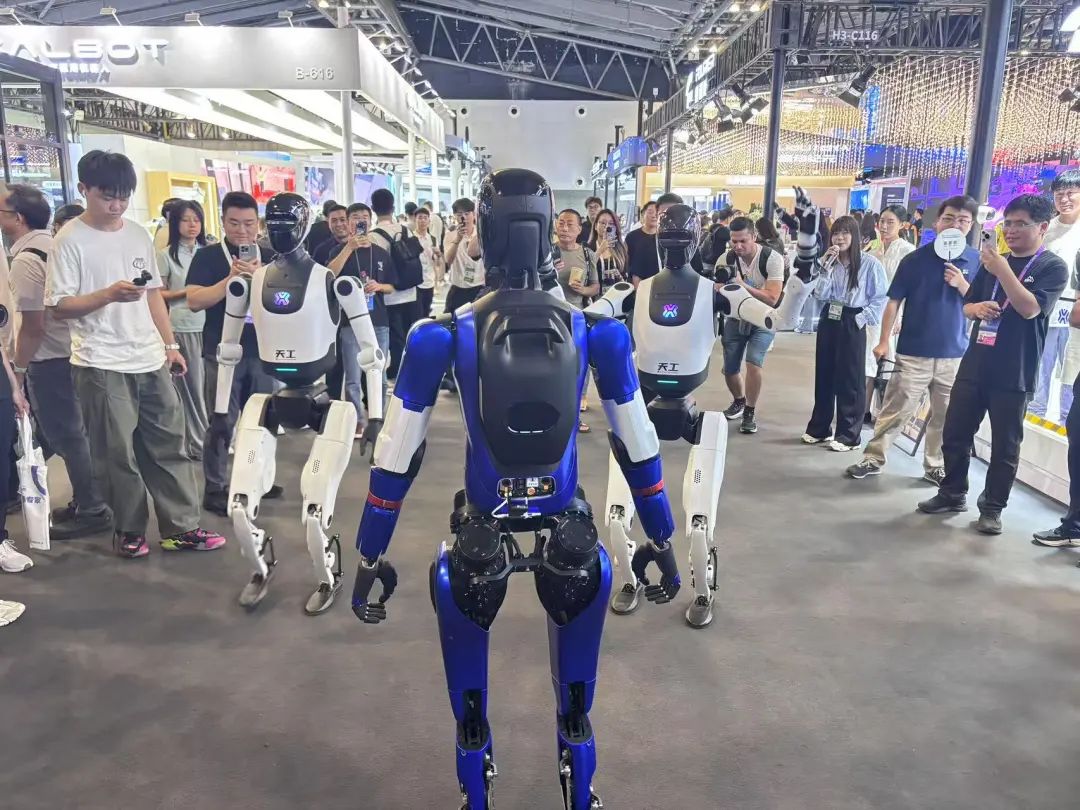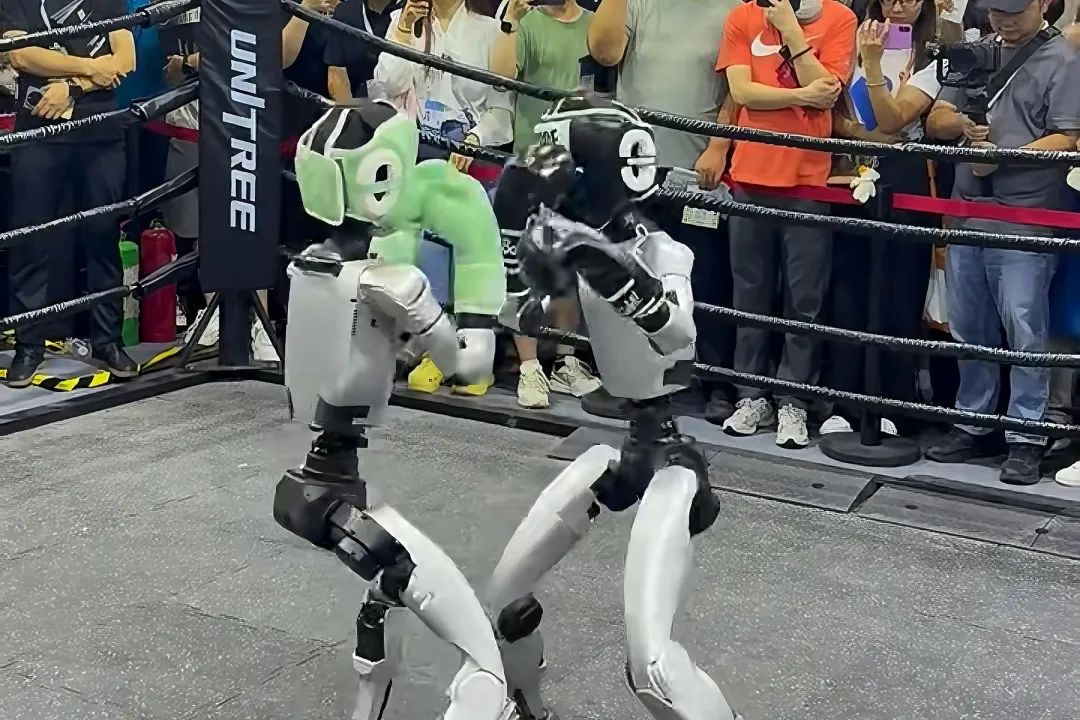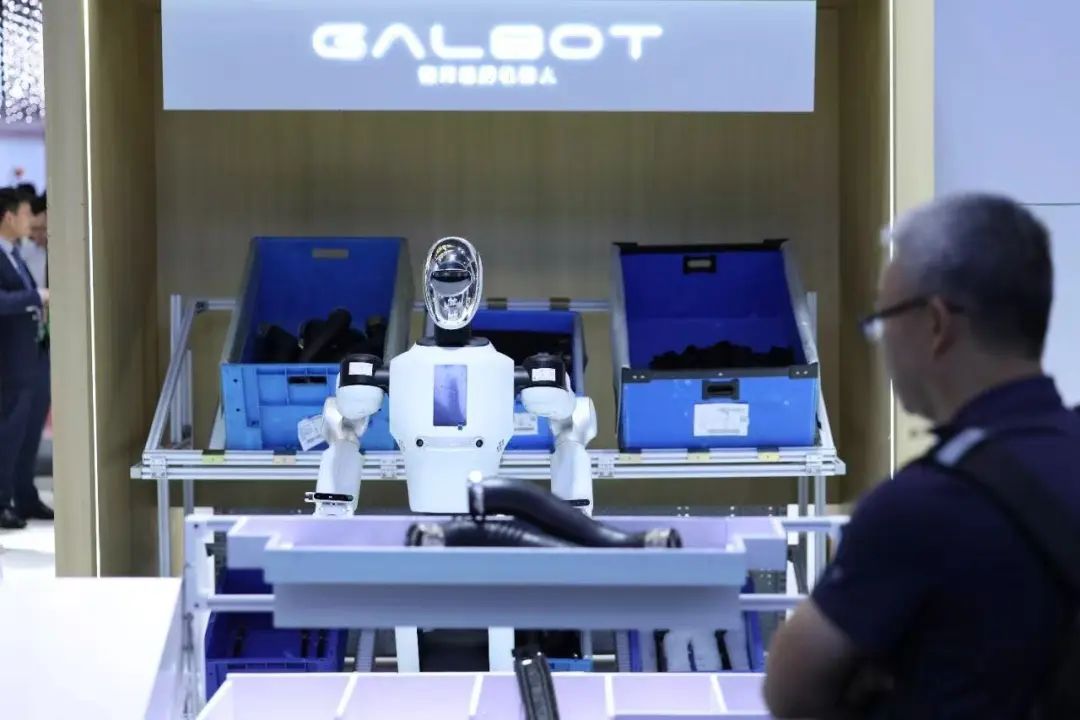Exploring WAIC 2025: The Embodiment of Intelligence and Its Future Trends
![]() 08/04 2025
08/04 2025
![]() 467
467

Virtually all companies in the realm of embodiment intelligence prioritize brainpower. In other words, vendors have come to realize that viable embodiment intelligence products must not only be physically robust but also mentally resilient.
Editor: Lv Xinyi
Upon thoroughly exploring WAIC 2025, my overarching impression is that every embodiment intelligence company is proving: "We are not mere showpieces."
On July 26, WAIC 2025 arrived as scheduled, bringing together over 90 embodiment intelligence robots in various forms. Some showcased their motion control capabilities, exuding a sense of competition; others found niche roles, such as making coffee, ice cream, or sorting items, quietly getting to work; still others roamed the venue, making friends with other robots...

Image source: Embodiment Learning Community
In short, everyone displayed their best skills, as if whispering to the audience, "It was worth coming."
The vibrant scene is quite striking, considering that last year's WAIC featured only a dozen embodiment intelligence companies, mostly with static displays. The transition from immobility to lively demonstrations has taken just a year.
Interestingly, a consensus emerged among exhibitors at the show. Almost all embodiment intelligence companies prioritize brainpower. In other words, vendors have come to realize that viable embodiment intelligence products must not only be physically durable but also mentally enduring.
Another consensus, not visibly expressed in exhibition stands but deeply felt by exhibitors, is that the household scenario remains the "ultimate goal" for all vendors. However, no one dares to provide a clear application scale. Trial and exploration have become frequent buzzwords.
Beyond the consensus on the ultimate goal, differences persist in the path to achieving it. Industrial and retail scenarios, while intertwined, each have their own "subtle strategies."
In industrial scenarios, continuous, multi-tasking, and collaborative work are becoming the means for vendors to break through and achieve ground applications. In retail scenarios, robots' capabilities in both big and small brains are being fully validated, and through consumer-end applications, the data flywheel for basic operational capabilities such as moving, grasping, and placing is accelerating.
When vendors compete over "where to use embodiment intelligence first," it's not about winning or losing but rather jointly exploring feasibility. All participants are building critical momentum for the explosion of the entire industry, and the era of "application is king" has already begun.

Possessing astonishing skills and the wisdom of long-range operations.
If you recall the exhibitors at WAIC 2024, many robots were still confined behind glass showcases, and those that could display dance moves were already considered advanced. But at this year's show, the excitement lies in each robot's versatility, from fancy moves to factory operations and retail duties, keeping robots busy.
The venue can be roughly divided into two types of performances: one is a physical prowess show, and the other is a brain IQ show.
In terms of popularity, the "physical prowess show" remains highly engaging. The robot vendor booth that attracted the most audience at this conference was Unitree Technology, which extended its mech suit competition to WAIC. Behind this performance lies a concentrated demonstration of Unitree robots' cerebellum and physical capabilities.

Image source: Embodiment Learning Community
The scene of "can't squeeze in" not only represents the freshness of physical motion control demonstrations but also indirectly proves the feasibility of Wang Xingxing's statement that "competitions are an economic scenario in themselves."
Additionally, companies like Zhiyuan Robotics, Xingdong Jiyuan, and Beijing Humanoid Robotics Innovation Center have also launched dance and other performance projects. Among them, Xingdong Jiyuan's new product, Xingdong L7, demonstrated a new breakthrough in "humanoid" motion control capabilities at the scene, with a height of 170 cm capable of 360-degree rotation and smooth street dancing.
Besides dancing, Qianxun Intelligence and Qiling Intelligence also showcased another type of motion control capability. Qianxun Intelligence's Moz1 performed random full-body movements while keeping its arms steady holding a cup of water without spilling and performing extreme S-bends. Qiling Intelligence demonstrated dual-arm motion control capabilities through cocktail making and popcorn distribution, precisely picking up cups and pouring drinks.
Beyond motion control capability demonstrations, vendors have realized the core role of the "brain" in generalized and scenario-based applications. Only by breaking through the constraints of the "brain" and enhancing generalization can robots truly become a new type of productivity. Many vendors highlighted demonstrations of long-range operations relying on the "brain" for cognition, reasoning, and planning.
For example, the mahjong robot Xiao Ling, equipped with the Lingchu Intelligence Psi-R1 model, not only played mahjong with Zhihui Jun, Chen Yuanpei, and Hu Yuhang before the conference but was also ready to challenge players at the conference site. Behind this lies a test of Lingchu Intelligence's long-range CoAT (Chain of Action Thought) capabilities in open environments. The relevant person in charge told the Embodiment Learning Community that playing mahjong is a random task that can demonstrate a robot's real-time perception-decision-making-closed-loop capabilities.
Furthermore, robots from Uliq and Flexiv can learn the entire process of making ice cream; Zhipingfang's Aibo learns to play drums by reading music scores; and robots from Beijing Humanoid Robotics Innovation Center can independently complete multiple processes such as opening cabinets, pressing buttons, and closing switches in the electrical control cabinet operation area.
It is worth mentioning that the Independent Variable Robot achieved true autonomous working capability at the scene, bidding farewell to single-point commands. According to the Embodiment Learning Community, based on the WALL-A general embodiment large model independently developed by the Independent Variable Robot, the robot "Xiaoliang" learned to make sachets independently within just a few days. Through live demonstrations, it can be seen that "Xiaoliang" is fearless of complex acoustic and optical environments and can maintain strong anti-interference capabilities in highly dynamic and densely populated areas, autonomously picking up sachets and incense cores of corresponding colors based on audience preferences.
In the household organization area of the Independent Variable Robot booth, the robot "Xiaobai" can move autonomously in a living room environment, accurately operating while moving without any modeling of the surrounding environment, relying on semantic navigation functions and real-time visual system information.
This is a rare sight at WAIC, where a robot completes a whole set of long-sequence complex operations based on a model, truly achieving autonomous perception, decision-making, and high-precision operation in an open and random environment.
Whether it's the display of physical structure or the demonstration of brain operation capabilities, vendors are exploring the "limit thresholds" of embodiment intelligence robots, enabling them to be used, run, and iterated in various ways, growing while in use.

Industry and commerce continue to compete, yet the consensus is clear: the household is the ultimate goal.
When asked about the tasks these robots should perform and whether they should enter factories or commercial scenarios first, the industry consensus became clear at this conference.
On the one hand, we see Kepler Robotics initiating an 8-hour live stream of continuous handling operations; Leju Robotics showcasing dual-robot collaborative operations on industrial assembly lines; the Tiangong series robots from Beijing Humanoid Robotics Innovation Center capable of completing power maintenance, bulb quality inspection, and item packaging; and Youaizhihe's robot matrix covering multiple scenarios such as production and transportation.
On the other hand, Yinhe Universal, which plans to expand to 100 unmanned pharmacies by the end of the year, showcased the commercial supermarket duties of its robots; Qianxun Intelligence's Quanlicon Moz1 can also stably complete the retrieval, delivery, and sale of beverages; the Zhuoyide Xingzhe II, which once placed second in a half marathon, transformed into an unmanned retail staff shuttling between shelves and the front desk; and retail stores and front-end warehouses created by Realman's ecological partner Xiaolu Robotics will connect with more riders.

Image source: Yinhe Universal
With both industrial and commercial scenarios demonstrating their application value, three voices have emerged:
First, the current development of the robotics industry has provided both types of scenarios with the technical foundation and market space for implementation. The pace of application in these scenarios is gradually synchronizing, and vendors are no longer entangled with who comes first but rather aim for "both and."
Second, while exploring together, a development path is being planned. For example, while landing in commercial scenarios, Yinhe Universal is also actively exploring operational scenarios in factories and auto plants, performing SPS sorting of automotive parts. It is understood that it has already cooperated with leading automakers such as Mercedes-Benz and Zeekr.
Fu Qiang, product partner at Yinhe Universal, said that retail is a transitional scenario before robots enter the household. Compared to industrial scenarios, retail scenarios have lower operational intensity and higher fault tolerance, with larger application scales. In other words, retail is a suitable application scenario for the soft landing of new technologies, effectively transitioning early technology development while ensuring the commercial potential to earn profits through applications such as unmanned pharmacies and front-end warehouses.
Third, focus on a single scenario for in-depth development and thorough understanding. For example, Qianxun Intelligence's Moz1 can accurately complete all tasks in office scenarios such as desktop organization, trash disposal, seat returning, and blackboard erasing. With the development of brain capabilities, Moz1 is no longer just an "executor" but has evolved into a thinking office assistant.
Although there are various ways of application at this stage, the consensus among vendors is that in the future, robots must enter thousands of households.
However, there is still no definitive answer within the industry as to when the era of thousands of households will arrive, but the trend has already emerged. Supported by industrial and retail scenarios, the outline of robots in household scenarios has been sketched out.
First, the scenario of folding clothes, demonstrating the ability to manipulate flexible objects, has already been proven feasible by some companies. Second, obstacle avoidance and autonomous navigation capabilities are becoming increasingly mature, indicating that current embodiment intelligence robots are expected to undertake flexible object manipulation tasks and smoothly navigate through household scenarios.
It is worth mentioning that there is a subtle point here, namely "safety." At the exhibition, Fourier Robotics unveiled its new humanoid robot GR-3, with soft materials, sleek design, and lively eyes, making the product more "warm" and far from the coldness of all-metal robots.
Gu Jie, CEO of Fourier Robotics, told the Embodiment Learning Community that the robot's design intent is to make humans "want to be close." Only by being willing to interact with robots is the key lever to drive the healthcare and wellness scenario. From this perspective, the household scenario may emerge from the nurturing of the "warm" and "safe" product concepts and technologies of robot products.
When robots calibrate the force of each grab in factories, remember regular customers' preferences in retail stores, and hand out an ice cream to a child at the exhibition stand, that's when the pieces of the household scenario are quietly being pieced together.








